Accessibility and service continuity
Some parts of a switchgear may be made accessible for the user, for various reasons from operation to maintenance, and such an access could impair the overall operation of the switchgear then decreasing the availability.

The IEC 62271-200 proposes user-oriented definitions and classifications intended to describe how a given switchgear can be accessed, and what will be the consequences on the installation.
The manufacturer shall state which are the parts of the switchgear which can be accessed, if any, and how safety is ensured.
For that matter, compartments have to be defined, and some of them are going to be said accessible.
Three categories of accessible compartments are proposed:
- Interlock based access: the interlocking features of the switchboard ensure that the opening is only possible under safe conditions
- Procedure based access: the access is secured by means of, for instance, a padlock and the operator shall apply proper procedures to ensure a safe access
- Tool based access: if any tool is needed to open a compartment, the operator shall be aware that no provision is made to ensure a safe opening, and that proper procedures shall be applied. This category is restricted to compartments where no normal operation nor maintenance is specified.
LSC Classification
When the accessibility of the various compartments are known, then the consequences of opening a compartment on the operation of the installation can be assessed; it is the idea of Loss of Service Continuity which leads to the LSC classification proposed by the IEC:
“Category defining the possibility to keep other high-voltage compartments and/or functional units energised when opening a accessible high-voltage compartment”.
If no accessible compartment is provided, then the LSC classification does not apply.
Several categories are defined, according to “the extent to which the switchgear and controlgear are intended to remain operational in case access to a high-voltage compartment is provided”:
- If any other functional unit than the one under intervention has to be switched off, then service is partial only: LSC1
- If at least one set of busbars can remain live, and all other functional units can stay in service, then service is optimal: LSC2
- If within a single functional unit, other(s) compartment(s) than the connection compartment is accessible, then suffix A or B can be used with classification LSC2 to distinguish whether the cables shall be dead or not when accessing this other compartment.
But is there a good reason for requesting access to a given function? That’s a key point.
Switchgear Examples (by Schneider Electric)
Example 1 – Ex Areva WI
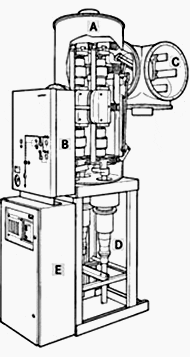

Here is a GIS solution with in (D) what is said to be “Base section with cable connection area” (AREVA WI). There is no connection compartment, and the only HV compartments are gas filled.
Example 2 – CGset
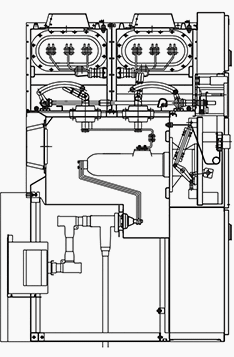

Here is a GIS solution (Schneider Electric CGset) with an air insulated connection (and possibly VT) compartment. This compartment is accessible (with tools). The other HV compartments are not accessible. Access to the connection compartment is possible with the busbar(s) live, meaning all other functional units can be kept operating.
The LSC classification applies, and such solution is LSC2.
Example 3 – GMset


Here is a GIS solution (Schneider Electric GMset) with an air insulated connection (and possibly VT) compartment. This compartment is accessible and interlocked with the earthing function.
The circuit breaker can be extracted (tool access compartment), even if that is not considered as normal operation nor normal maintenance. Access to one functional unit within a switchboard does not require any other functional unit to be switched off. Such solution is LSC2A.
Example 4 – GenieEvo
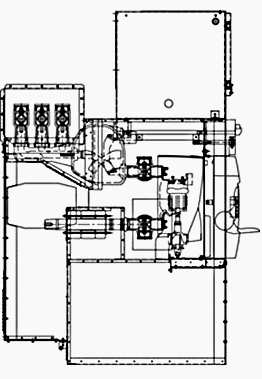

A mixed technology (Schneider Electric GenieEvo) with an air insulated connection compartment, and an air insulated main switching device which can be extracted with the busbar live, thanks to the disconnector. Single line diagram is similar to example 2.
If both the connection compartment and the circuit breaker compartment are accessible, and access to any of them means the cables are first switched off and earthed.
Category is LSC2A.


Example 5 – MCset


A very classic structure of withdrawable air-insulated switchgear (Schneider Electric MCset), with interlock accessible compartments for the connections (and CTs) and the main switching device.
The LSC classification applies, and category is LSC2B.
Example 6 – SM6


A typical secondary distribution switch-disconnector switchgear, with only one interlock accessible compartment for the connection (Schneider Electric SM6).
When accessing one compartment within the switchboard, all other functional units are kept in service. Category is again LSC2. Similar situation occurs with most of the Ring Main Units solutions.
Example 7 – RM6
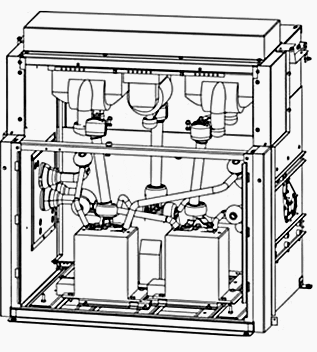

An unusual functional unit, available in some ranges: the metering unit which provides VTs and CTs on the busbar of an assembly (here a Schneider Electric RM6).
This functional unit is LSC1.


Reference // Medium Voltage technical guide – Schneider Electric (Download guide)




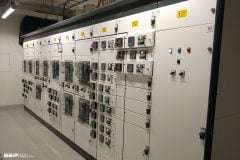






CLASSE LSC2A-PM , DESEARIA SABER COMO SE DEBE OPERAR ESTE TIPO DE CELDAS,COMO ARREGLAR SI ESTA CON PUESTA A TIERRA
Edvard Csanyi, thank you
The Technical information are highly professional and very helpful.
very nice